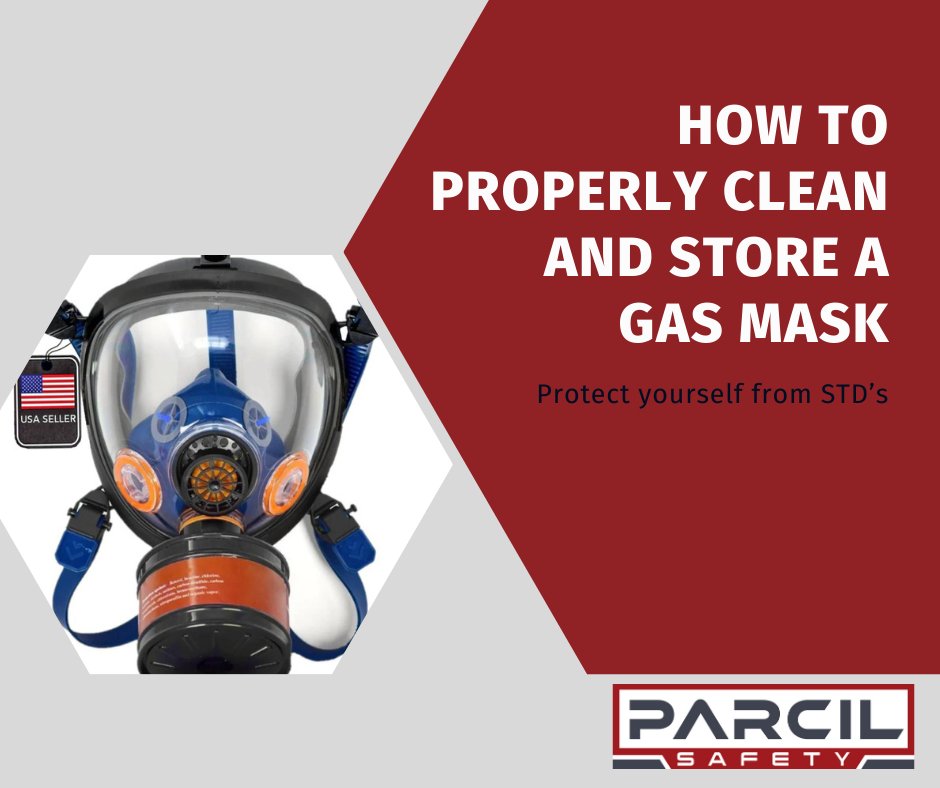Hello, safety-conscious individuals! If you’re someone who values clean and breathable air, then you understand the importance of investing in quality gas masks. Today, I’m here to shed light on the significance of gas masks, focusing on models like the NB-100, NB-100V, NB-100E, IIR-100, and ST-100X. Let’s delve into the step-by-step cleaning procedures for these lifesaving devices and explore some essential tips for their maintenance and storage.
Parcil Safety's Complete Guide to 40-MM Respirators
How to clean your respirator?
Disassembly: First things first, carefully disassemble your gas mask according to the manufacturer's instructions. This usually involves removing the filters, straps, and any other detachable parts.
Inspect for Damage: Take a moment to inspect each component for any signs of damage or wear. Look for cracks, tears, or deformities that could compromise the integrity of the mask.
Wash with Mild Soap: For the mask itself and non-electronic parts, use a mild soap solution and warm water to gently wash away dirt, grime, and contaminants. Avoid using harsh chemicals or abrasives that could damage the materials.
Rinse and Dry Thoroughly: After washing, be sure to rinse off any soap residue with clean water. Then, allow all the components to air dry completely before reassembly. Avoid using heat sources like hairdryers, as they can cause damage.
Clean Filters: If your gas mask uses replaceable filters, check them for any debris or blockages. You can gently tap them or use a soft brush to remove surface dirt. If the filters are disposable, replace them according to the manufacturer's recommendations.
Check out Parcil Safety's range of 40-mm Gas Masks.

SHOP NOW
For further insights on top-performing 40mm gas mask filters, delve into this article (https://parcilsafety.com/pages/best-40mm-gas-mask-filters-guide-by-parcil-safety)
Reassemble Carefully: Once everything is clean and dry, carefully reassemble your gas mask, making sure all parts are properly aligned and secured. Pay special attention to the seals and connections to ensure a tight fit.
Store Properly: Finally, store your gas mask in a clean, dry place away from extreme temperatures, moisture, and direct sunlight. A protective case or bag can help prevent damage and keep it ready for use at a moment's notice.
How to properly store a gas mask?
Prior to storing your gas mask for an extended period, ensure it is clean and dry. Optimal storage involves placing it in a cool, dry location away from direct sunlight, safeguarding its integrity and functionality.
How often should gas mask filters be changed?
Filter Replacement: Regularly replace the filters according to the manufacturer's recommendations or if you notice a decrease in airflow or effectiveness. Typically, filters should be replaced every few months, depending on usage and environmental conditions.
To know more about the filter shelf life and replacement, delve into this article (https://parcilsafety.com/pages/what-is-a-filter-shelf-life-for-a-respirator-mask)
How to maintain a gas mask?
Maintenance Schedules: Establishing a routine cleaning schedule for your gas mask is essential for its longevity and reliability. Depending on usage frequency and environmental factors, a weekly, bi-weekly, or monthly maintenance regimen is recommended.
What air quality should you wear a mask?
Air Quality Monitoring: Remain proactive in monitoring the air quality in your surroundings, adjusting your gas mask settings accordingly. Many models feature built-in sensors that detect pollutants, providing timely alerts for filter replacement or adjustments.
Here is a great insight on What air quality should you wear a mask?
Another blog post by Parcil Safety on Proper Usage and Maintenance of Industrial Respirators.
By adhering to these cleaning procedures and implementing proper maintenance practices, you can extend the lifespan of your NB-100, NB-100V, NB-100E, IIR-100, or ST-100X gas mask, ensuring continued protection against airborne hazards. Let’s embrace the importance of gas masks in safeguarding our respiratory health and fostering a cleaner, safer environment for all. Breathe easy, and stay protected!





















Leave a comment
All comments are moderated before being published.
This site is protected by hCaptcha and the hCaptcha Privacy Policy and Terms of Service apply.